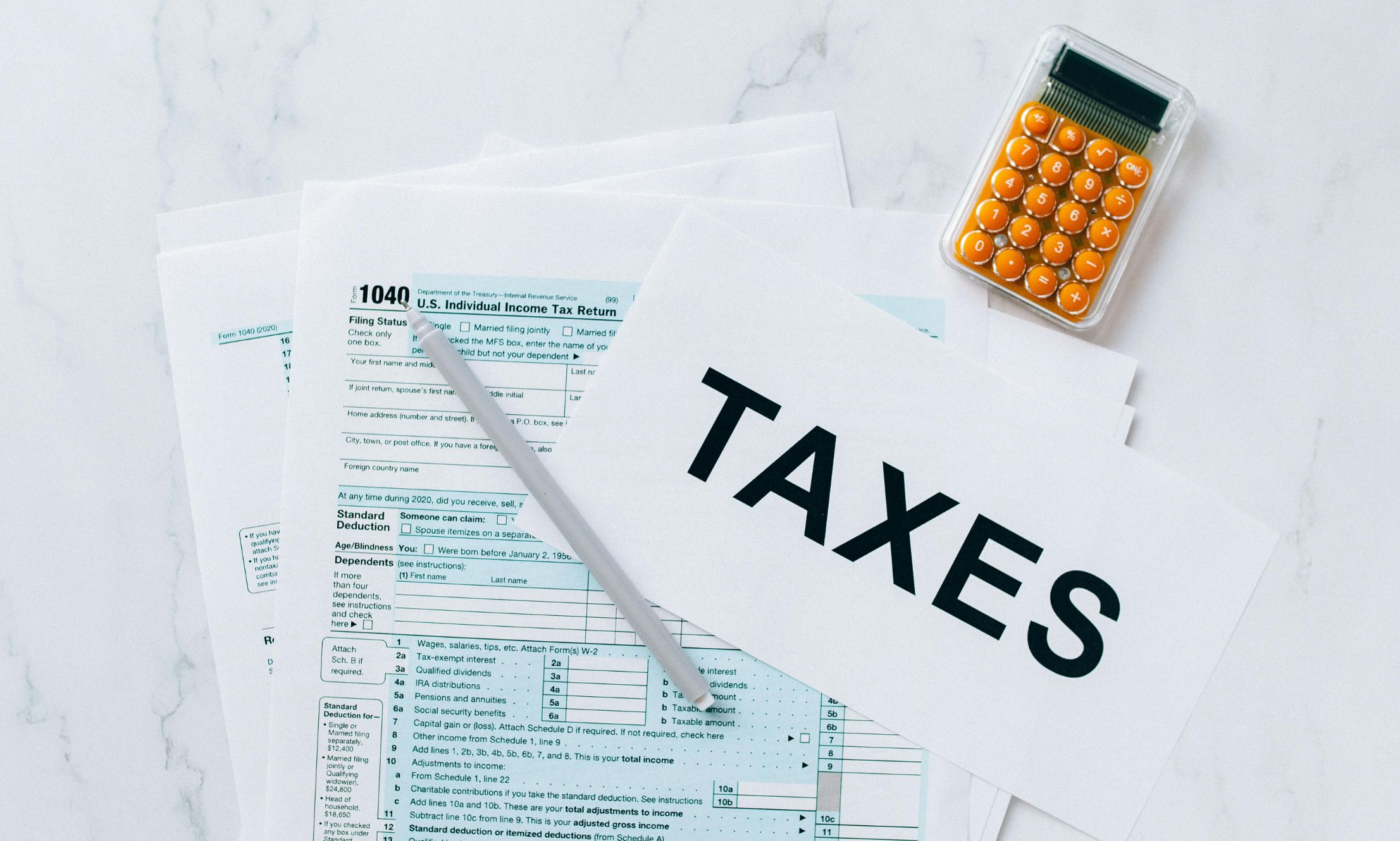Preparing Your Business Tax Return: 5 Things You Need to Ensure
17 April 2025
7 Mins Read

toc impalement
Submitting your business tax return is not merely filling in some numbers and clicking send—it’s a fiscal report card for everything your business has accomplished (or endured) over the last year.
It’s your company’s yearly check-in with the IRS; like with any big meeting, you don’t want to arrive unprepared.
Whether you operate a lean startup or oversee a mature business, getting ready to file your return needs to be less like attempting to piece together a jigsaw puzzle in the dark and more like checking off a well-planned to-do list.
Yet, too many entrepreneurs still dig around for misplaced documents, make mistakes in categorizing deductions, or misinterpret what “filing-ready” entails.
But imagine if this year, tax season didn’t have to be a pressure cooker.
Before you’re drowning in receipts or drowned out by spreadsheets, let’s flip tax time on its head. The guide simplifies 5 vital pieces that each business, whether small or large, must gather, check, and confirm before clicking the “file now” button.
Not only will it save you time and annoyance, but it’ll also steer clear of potentially costly mistakes, forgotten deductions, and lengthy hold-ups.
How to Prepare for Your Business Tax Return

Whether you are filing Form 1120, 1065, or 1041—or seeking an extension on Form 7004—this is your concise guide to a hassle-free, confident filing process.
Let’s get into what you’ll require, why you’ll require it, and how preparing ahead of time sets the stage for a better tax year.
1. Determine the Business Requisite Tax Forms
Before you complete your tax return, you should first know how your business is categorized for federal tax purposes.
Your business structure determines what IRS tax form you will use, your taxes and legal obligations, and how the IRS will treat your business.
The following is an overview of the general business types and their corresponding form types.
Sole Proprietorship
A sole proprietorship is a simple business from owning and run by a single individual. There is no division between the owner and the firm at law.
It is the simplest form to start and maintain, but the owner personally assumes any business obligations or debts that the business has. Sole proprietors report business profits and losses on Form 1040 with Schedule C.
Partnership
A partnership is a business entity owned and liable by two or more individuals. All partners are engaging in running the business and sharing profits and losses on their respective tax returns.
Like a sole proprietorship, the business entity itself is not separately taxed. The partnership files an annual information return on Form 1065, and each partner receives a Schedule K-1 to report his or her share of the partnership’s income on his or her tax returns.
C-Corporations
C-corporations are taxed separately, so the company pays income tax on the profits. Distribute profits to the owners as dividends, the dividends are taxed a second time on the owners’ personal return—”double taxation.” C-corporations are required to file Form 1120 with the IRS annually.
S-Corporations
S corporations are like C corporations but provide an essential distinction in taxation. S corporations are pass-through entities; the business entity does not pay federal income tax.
The income is passing to the shareholders, who report it on their tax returns. This prevents double taxation due to regular corporations. S-Corporations report the income on Form 1120-S; every shareholder is given a Schedule K-1.
Limited Liability Company (LLC)
A Limited Liability Company is a corporate form that offers liability protection with tax flexibility. This form keeps personal and business liabilities in distinct layers, protecting the owners (members) from being held personally liable for business debt.
For tax purposes, LLCs are usually treating as pass-through entities, where the profits and losses pass directly to the members’ tax returns. This flexibility has made the LLC a favorite among small and medium-sized enterprises.
Single-Member LLC
A single individual owns it. It can be taxed for federal income tax purposes in two ways at the discretion of the owner:
- Sole Proprietorship (Disregarded Entity) – A single-member LLC is a sole proprietorship by default. The income and expenses of the business are reported on the owner’s individual tax return with Form 1040.
- Corporation — The one-member LLC may be treated as a corporation by submitting Form 8832. Treating it as a C-corporation, it will file Form 1120. If it is treated as an S-corporation, it will file Form 1120-S.
Multi-Member LLC
A Multi-Member LLC is an LLC that has more than one owner. It provides identical personal liability protection to its single-member counterpart but entails co-management and tax burdens. The IRS has the following tax categorizations for multi-member LLCs:
- Partnership — This is the default LLC type, and it imposes tax as a partnership. The company reports on Form 1065, and each member gets a Schedule K-1 to report his or her share of income and deductions on his or her tax return.
- S-Corporation – A Multi-Member LLC can elect to impose tax as an S-Corp by filing Form 1120-S annually to report its income and losses to the IRS.
- C-Corporation – The LLC can impose tax as a C-Corp by filing Form 8832. The firm then files Form 1120 and pays corporate tax on earnings.
2. Collect All the Necessary Information
There are certain important facts that you should prepare before starting to prepare your business tax return.
This readily available information makes the process easier and avoids unnecessary errors or discrepancies with the IRS.
- Legal name
- Business address
- Employer Identification Number (EIN) or (SSN)
- Business form of structure (LLC, S-corp, C-corp, partnership, etc.)
- Previous year’s tax returns
- Estimated tax payments throughout the year
3. Tax Deadlines – Important Dates to Keep in Mind
The due date changes depending on the type of your business and tax classification. Knowing such key dates allows you to avoid penalties for filing late and charges interest.
Being an informed and thoughtful person, you can ensure your business conforms to IRS rules without unnecessary inconvenience.
| Business Structure | Deadlines |
|---|---|
| Partnership – Form 1065 | March 15 |
| S-Corporations – Form 1120-S | |
| Single or Multi-member LLC (Treated as S corporations) | |
| Multi-member LLC (Treated as Partnership) | |
| C-Corporations – Form 1120 | April 15 |
4. Need More Time? File an Extension
If you can’t file your tax return on time and need more time to file your tax returns, you can request an IRS extension form to postpone the due date of filing. If businesses file an extension, it will be an automatic 6-month extension to file a business tax return.
This extension is automatic; therefore, you do not need to give any reason or explanation to the IRS for filing an extension. Filing an extension varies with your tax form type. For instance,
- If you are a sole proprietor and would prefer extra time to file your Form 1040, you can file Form 4868 online to obtain an automatic 6-month extension to file the tax return.
- If you’re a C-corp and require extra time to file your Form 1120, you may e-file Form 7004 to obtain an automatic 6-month extension to file your first tax return.
Remember that requesting an extension will only delay the due date for filing, not the due date for paying the taxes owed. Outstanding payments should still make on or before the initial due date.
5. Know Penalties for Failure to Pay or File Timely
The IRS charges penalties if you do not file your tax returns by or on the due date, with or without an extension. Whether you were late in filing or paying depends on your tax form.
Late Filing Penalties:
For instance, if you are late filing Form 1040, along with the extension, the IRS charges a penalty of 5% every month for up to 5 months on the due amount.
Late Payment Penalties:
The IRS will charge penalties on the unpaid amount if you fail to pay your tax due within the time limit. The penalty is usually a percentage of the tax due, and the longer you delay, the higher the penalty.
To sidestep these possible charges, submit your extension timely and remit any taxes due.
Preparing your business tax return doesn’t have to be daunting, especially if you know how to do it. From knowing your entity type to determining the correct forms and monitoring deadlines, every action you take today further simplifies the way to a smooth, accurate filing experience.
Whether you’re filing by the earlier deadline or just want a small amount of additional time with an IRS extension, remaining proactive puts your company into compliance and prevents you from paying undue penalties.
Allow yourself time to organize, double-check your information, and select the correct filing tools.

















